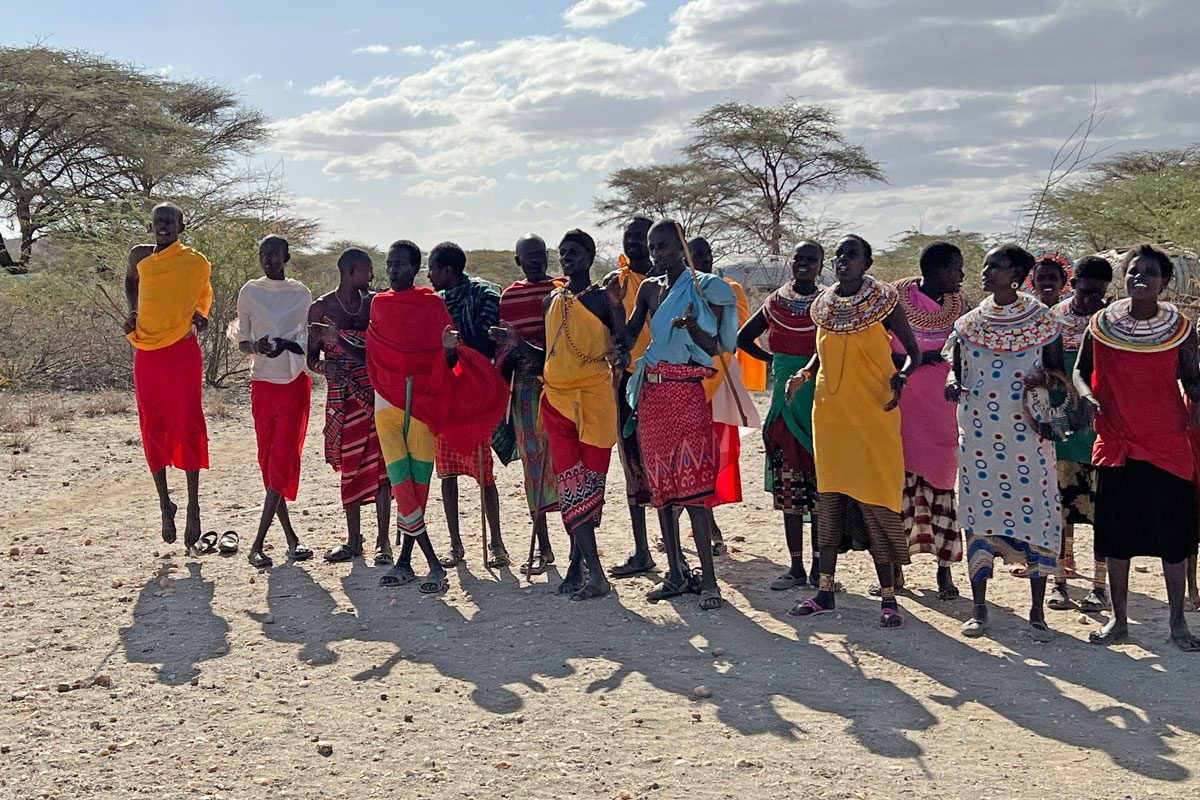
Visiting the Samburu Tribe in Northern Kenya is a fantastic way to briefly take a step into the world of the Samburu who, to this day, continue to live a semi-nomadic and traditional lifestyle that is largely untouched by the modern world.
Known for their brightly colored dress, beautiful beaded necklaces and wonderful dances, the Samburu people are also considered to be a tribe of great warriors. They speak their own dialect of the Maa language and refer to themselves by the name of “Loikop,” which generally translates to “owners of the land.” Yet, most people know them as the Samburu. The name “samburu” means “butterfly,” and this was the name given to them by neighboring tribes who admired their beauty.
Samburu people revolve their lifestyle around that of their cattle and livestock. And in this arid region of north-central Kenya, this means that the Samburu frequently relocate their village in search of better grazing grounds.
In the summer of 2022, our family had the opportunity to visit a Samburu Village during our stay in Northern Kenya. It was a fascinating experience and I’d love to share with you what we learned.
VISITING A SAMBURU VILLAGE
While staying in Samburu National Reserve, our guide arranged for us to visit a nearby Samburu Village as part of our afternoon excursion. This was in-turn combined with a safari drive on the way back to our camp. I was very curious to learn more about the Samburu people and visiting their village was an opportunity I did not want to miss. I was also excited for my children to see the Samburu’s traditional lifestyle and for all of us to learn more about their fascinating culture.
Family Tip:
Before visiting Africa, our whole family read the book Facing the Lion, by Joseph Lekuton. We absolutely loved it! It’s easy enough for an 8 year old to read, and yet as an adult I learned a ton about what it’s like to grow up in a nomadic tribe in Northern Kenya. (The author’s tribe is a mixture of Samburu and Rendille.) This is the perfect book to read before traveling to this area.
As our safari van pulled up to the Samburu Village, I wasn’t quite sure of what to expect. The land here was so incredibly dry, the village looked unimaginably poor and I felt like a complete outsider.
I was worried that we would be seen as an intruder into their village and that in reality they really didn’t want us there. Or that their village would feel more like a cheesy tourist attraction (like unfortunately some Native American sights do in the United States.)
Luckily my fears were quickly extinguished because, as soon as we got out of our vans, an incredibly friendly Samburu tribesman came to greet us.
He was dressed traditionally yet spoke perfect English, which honestly surprised me. I guess I just never realized that traditionally living natives in the middle of Africa might speak fluent English. I had a lot to learn.
And then before our tour began he was talking to our guide for a minute and I saw him pull out a cell phone from his traditional clothing! That blew me away! What a unique merging of two worlds, the traditional and the modern. It’s crazy to think that a person can live in the middle of Africa in a hut with no electricity or running water, and yet some individuals of the tribe had access to a cell phone with all of its technology at their finger tips. I was intrigued.
OUR SAMBURU CULTURAL EXPERIENCE BEGAN
As our Samburu Cultural Tour began several members of the tribe came up to us and offered us necklaces to wear during our visit. I thought that this was a great way to “break the ice.” By wearing necklaces like the tribe members, they were slowly bringing us into their world. I knew right then that this would be an experience that I would enjoy.
While admiring our borrowed Samburu necklaces, our Samburu guide told us how the colorfully-beaded necklaces played an important role for the Samburu people. We learned that necklaces, for the Samburu women, not only signify a woman’s marital status but that the necklace’s beauty and size also signifies the individual’s wealth and status within their community.
Below, the wife of the chief showed us her elaborate necklace and the necklace of an unmarried younger girl within the village to show us the difference.
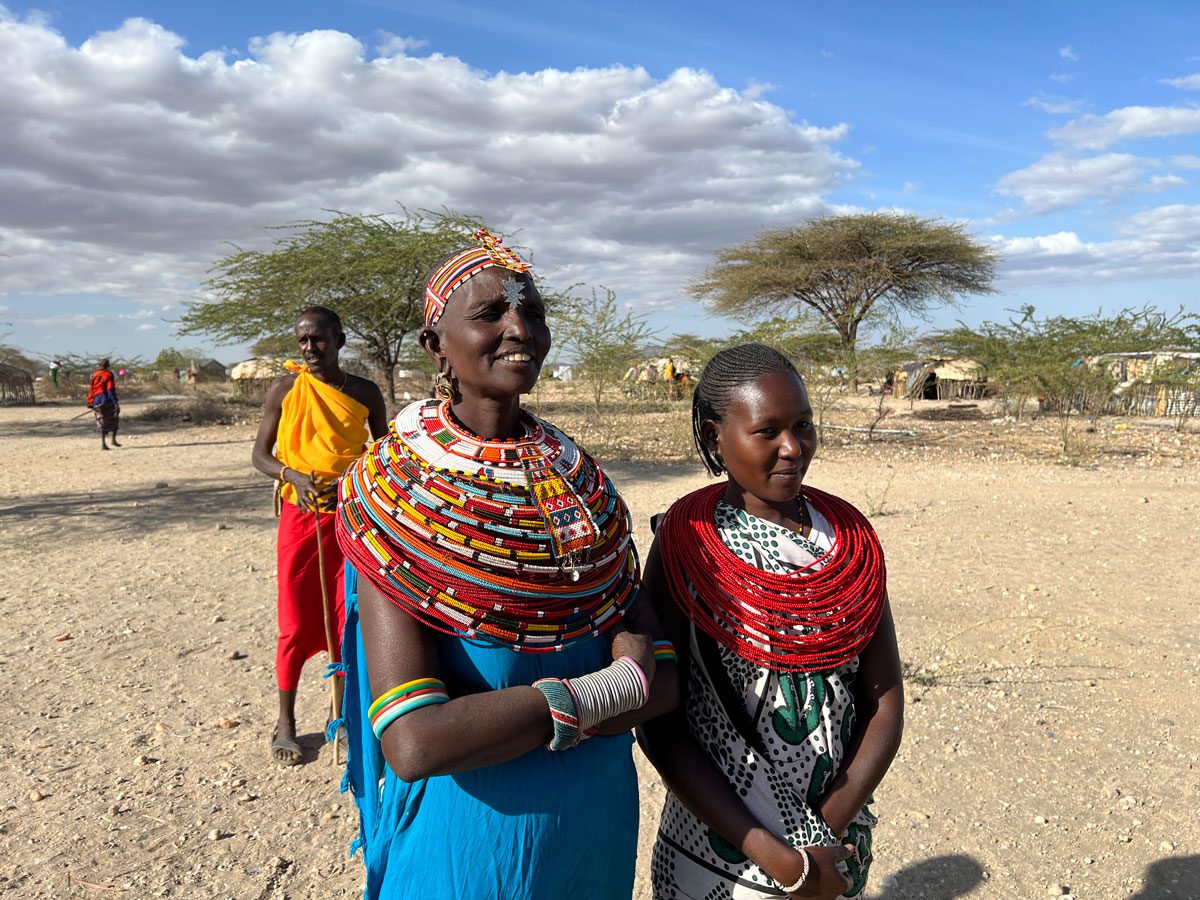
SAMBURU TRADITIONAL DRESS
As we were introduced to members of the Samburu Village we also noticed the beautiful traditional dress of the Samburu people. Females tended to wear bright solid-colored dresses (a few had pretty patterns on them) and they were decorated with elaborate beaded necklaces, earrings and bracelets. The men’s clothing primarily consisted of brightly colored red cloth that was wrapped around their body like a skirt, with a yellow cloth wrapped around their chest like a sash. They too also wore some jewelry but it tended to be more simple in nature.
TRADITIONAL SAMBURU DANCES
Next the singing and dancing began.
Singing and dancing are extremely important in the Samburu culture.
The first dance was saw was a traditional dance where the men took turns jumping as they all sang. This reminded me of the famous Masaai dances.

Next, the Samburu people began coming over to us and inviting our group to dance with them. This I had not been expecting, but it turned out to be a wonderful experience. They first asked our children to come dance, which is smart because it’s usually easy to get kids to do stuff. And then they branched out to the rest of our group. Before I knew it I was out there dancing in a circle with the Samburu people having a great time. The singing and dancing was a lot of fun and everyone was full of smiles.
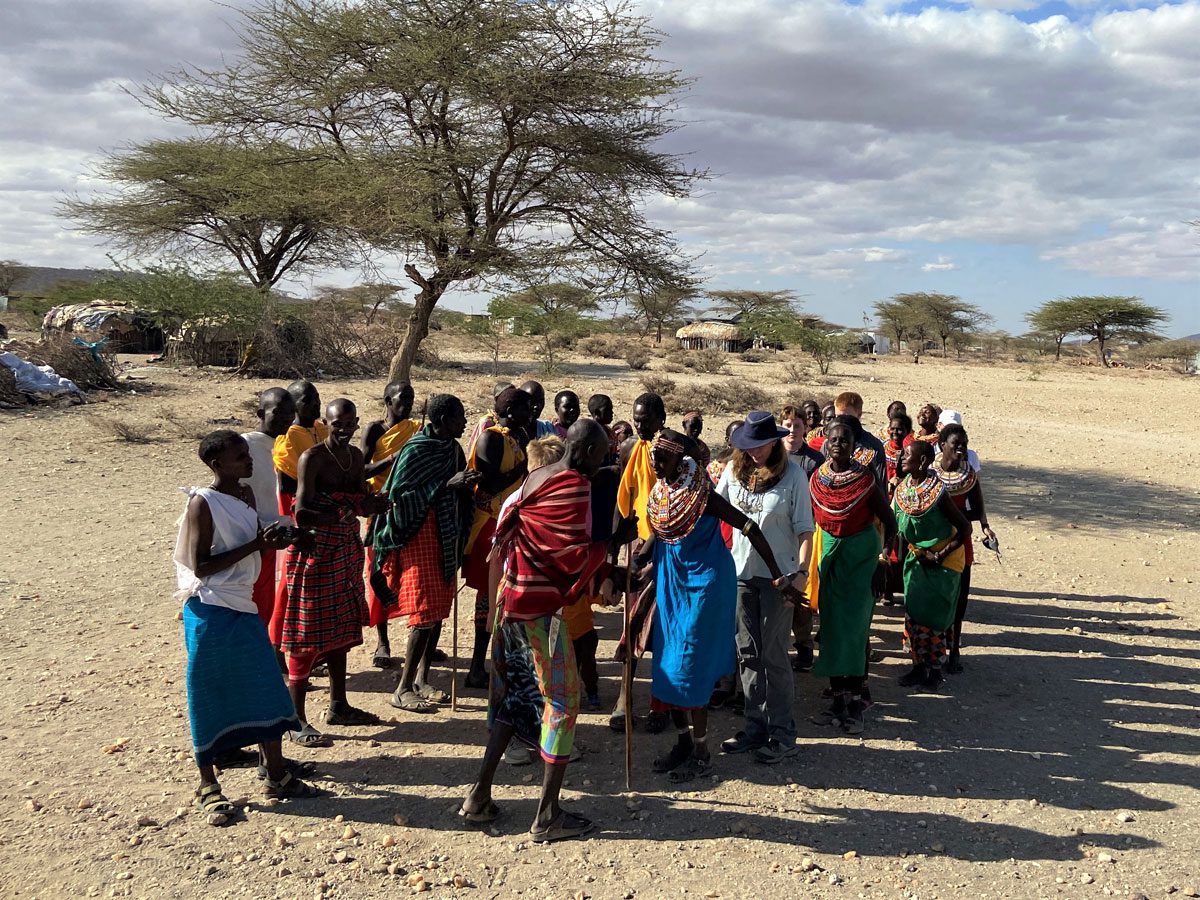
After dancing, we walked over to their houses to learn more about their village and how they live.
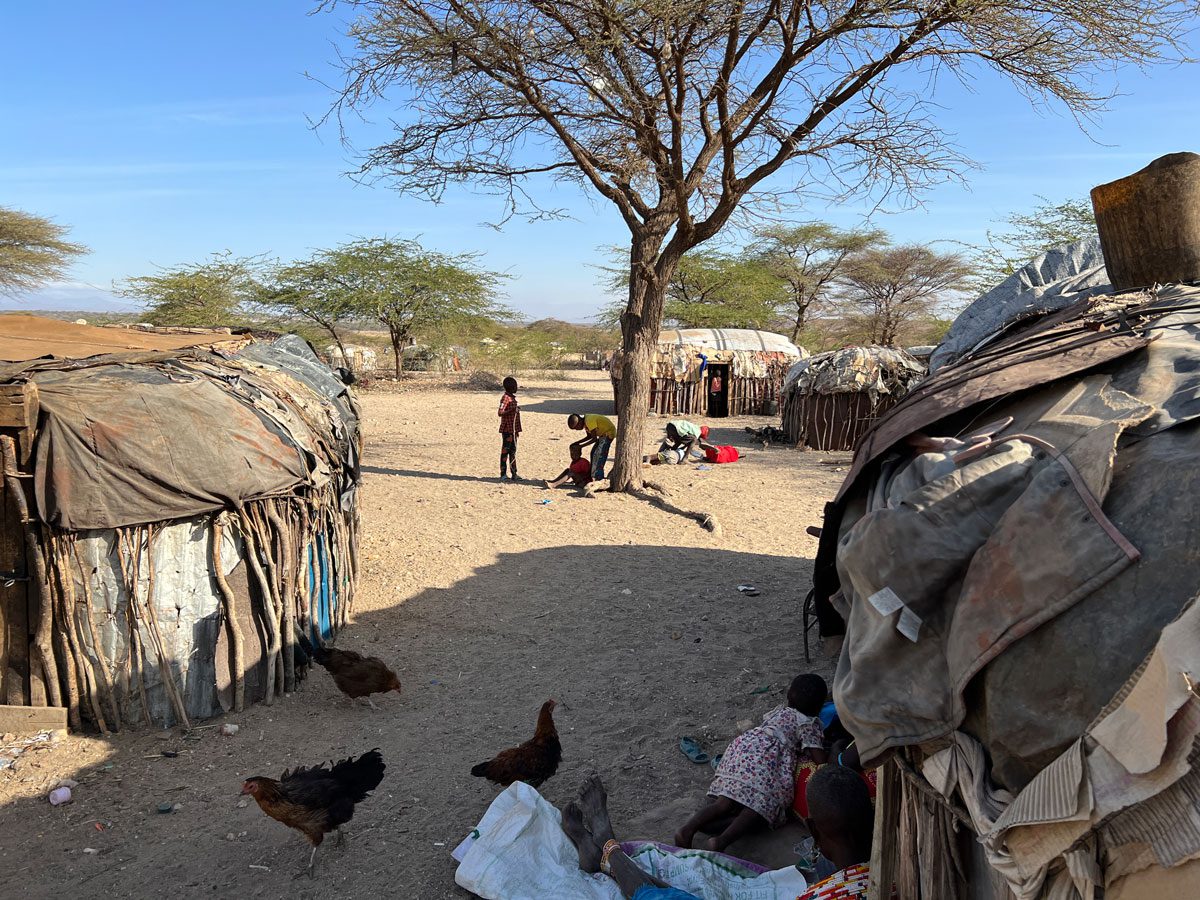
A SAMBURU HOME
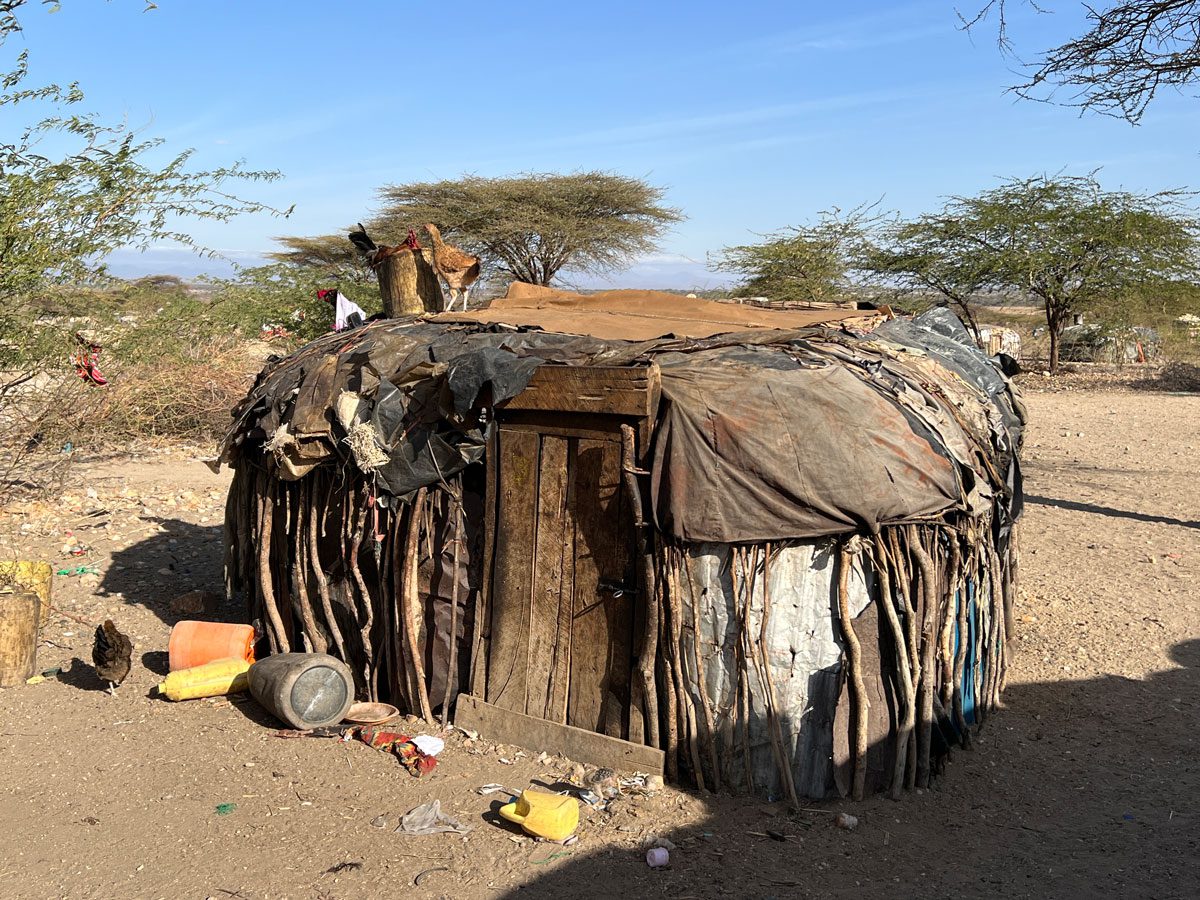
So, honestly the state of the Samburu house really surprised me. Previously I had seen images of their homes online so I thought I knew what to expect. But to me this looked so much poorer. I’m not sure if Samburu’s severe drought (it hasn’t rained here for over two years!) has caused this change or if the images I had seen previously were from other villages, but this was definitely different from what I had been expecting.
Yet, the Samburu people proudly showed us around and were happy to tell us all about how they built their houses and how each family lived.
During this time, I learned that typically the roof of a Samburu house would have a grass-like mat on it, and that mud and hides were many times used to cover the outside structure. So I’m guessing that with this severe drought, they have had to resort to other materials for their roofs and walls at this time.
Below is a picture of the wooden skeleton of a Samburu home that is currently being built. Building homes with this type of portable structure allows their homes to be easily dismantled and moved to a new location. (This is necessary since the Samburu tribe relocates frequently as they move with their cattle to better grazing grounds.)
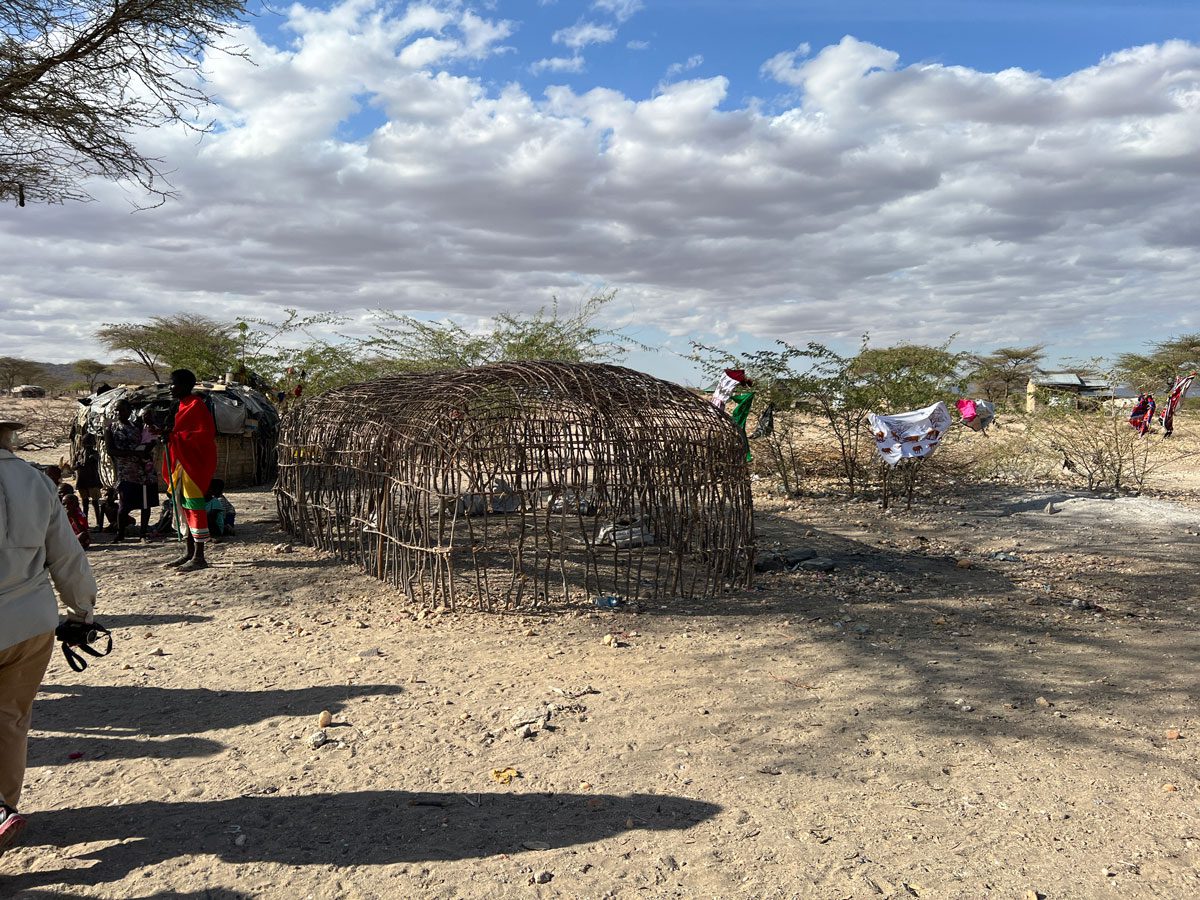
A PEEK INSIDE A SAMBURU HOME
As we learned more about their village, we were then invited to enter into one of their homes. This was an eye-opening experience as well.
Immediately upon entering we noticed the aroma of wood smoke fill the air. We were told that a fire is always left smoldering in one corner, where they cook, so that they can quickly cook up a meal whenever they please.
At this time we also learned that the Samburu diet primarily consists of milk and on occasion the blood from their cows. (The blood is collected by nicking the cow’s jugular vein and then the wound is quickly sealed with hot ash.) And meat is mainly eaten only on ceremonial occasions.
As we entered into this typical Samburu home, we found that there were two rooms. We were guided to sit on the floor of the larger room and found it covered with several cow hides that were stacked on the floor. Here we were told that during the day they keep the top hide turned over to walk on and that when they go to sleep they flip it over so that it is soft to sleep on. We were also told that in this one room, there might be 10 people from a family sleeping!
The Samburu home definitely made me re-think what I really need in life verses what I think I “need” in order to be happy. And by looking around, the Samburu people definitely seemed happy.
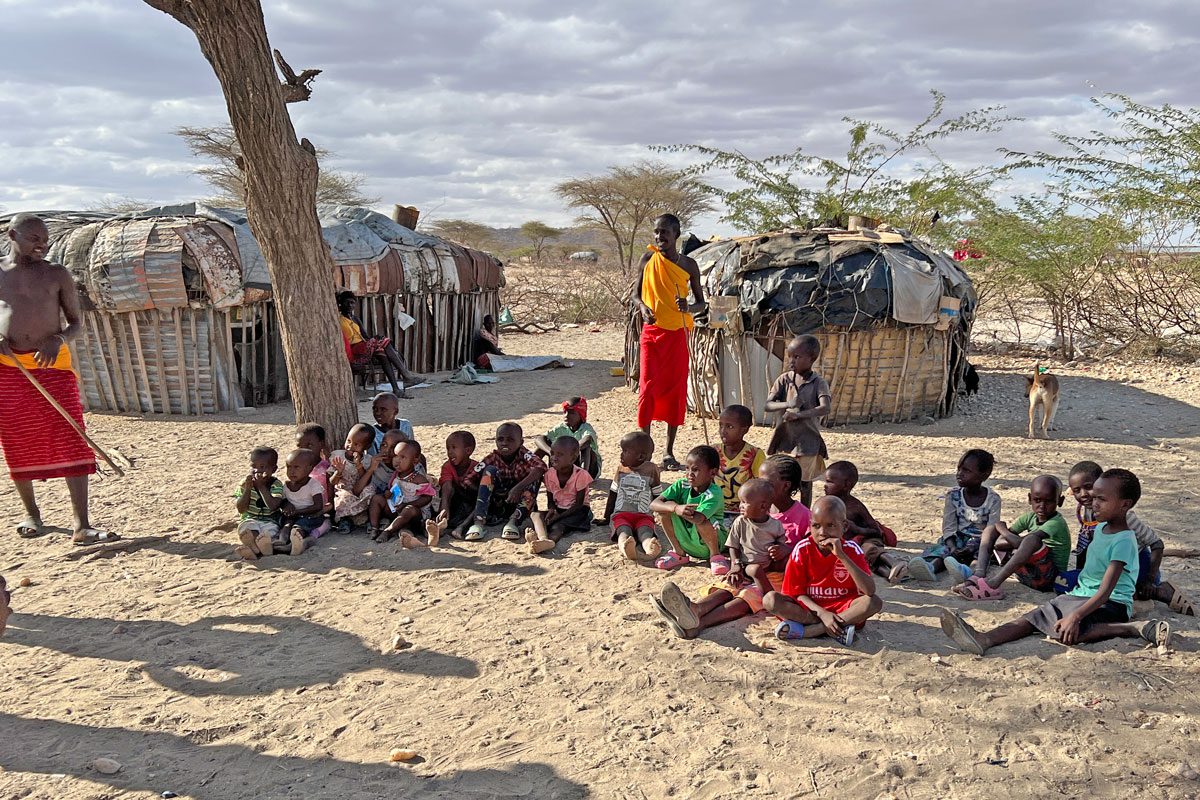
MEETING THE SAMBURU CHILDREN
After our tour of a Samburu home, we were then introduced to their young children and they were absolutely adorable. The older kids were all in regular school during our visit, but this meant that the younger children could show us their impressive skills.
Here, children that looked mostly younger than five, sang to us their A, B, Cs in English and then recited different animal names to us, all in English!
Back in the United States I often tutor 5 and 6 year old Americans to help them learn their A, B, Cs, sight words and reading, and I was absolutely shocked that kids here, in the middle of Africa, living in a small hut, were doing the same thing. And this was not in their first language!
I was seriously impressed!
SAMBURU MEN MAKING FIRE
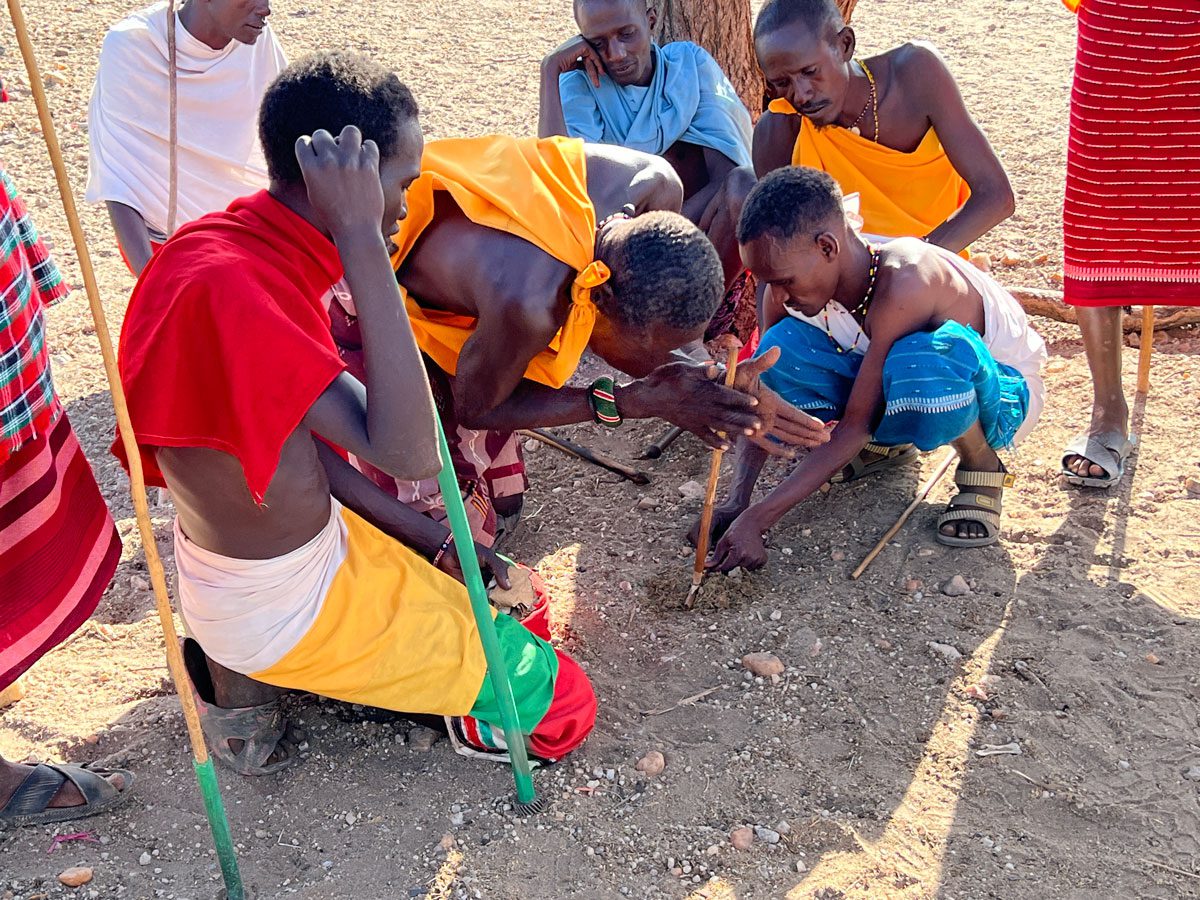
Next, we were taken over to where several men in the tribe were demonstrating how they make a fire each day, the traditional way. This is a lot of work and I’m not sure if I could do it, but they made it look so easy.
Again, I was impressed.
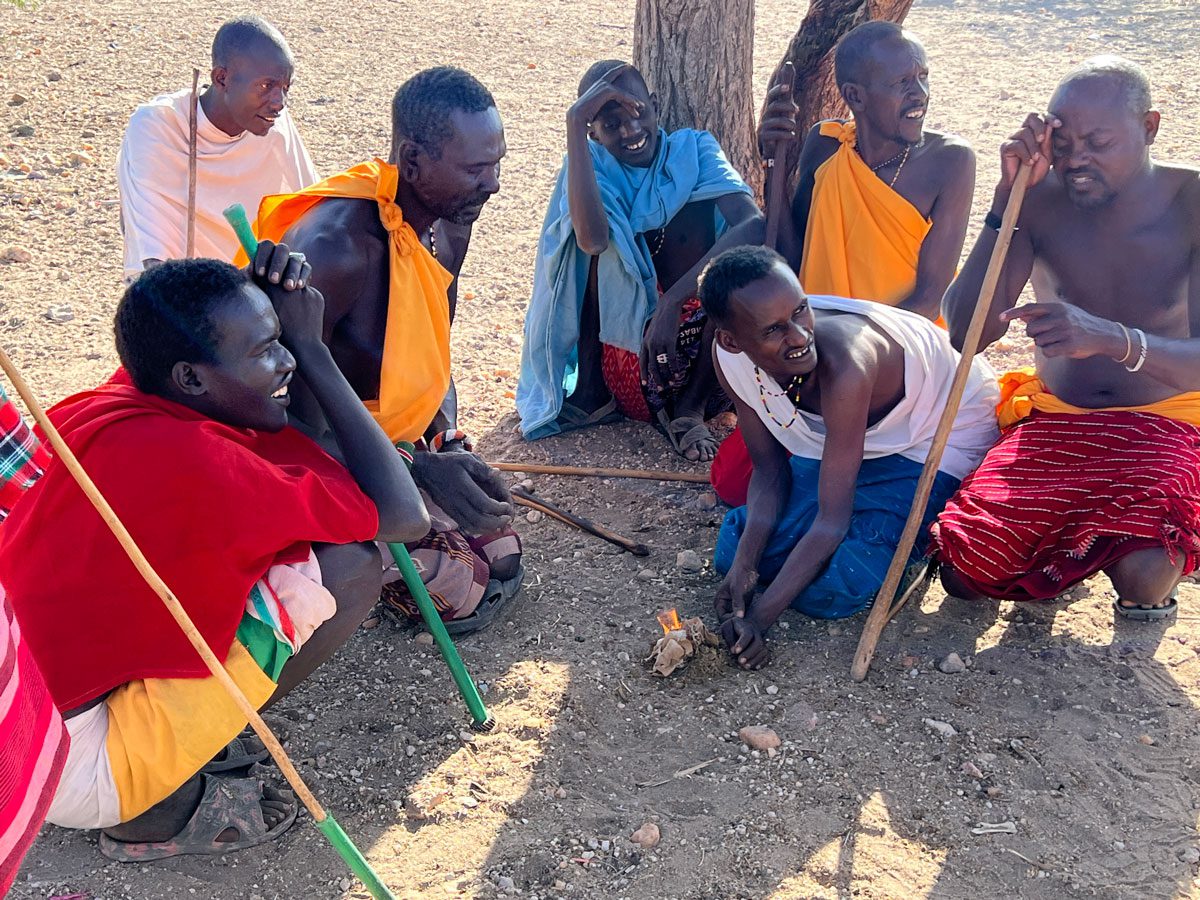
SAMBURU SOUVENIRS
As our experience was wrapping up, we noticed that all of the women began laying out blankets with beaded necklaces, animal carvings, hand-made sling shots and other items.
At first I felt torn about which person to buy from. How could I possibly decide? But then our guide told us not to worry since any money that we spent was shared among all of the people of the Samburu Tribe. That made me feel better, knowing that the money would help all of the tribe and not just one family.
So, even though there is no obligation to buy anything while on this tour, we did end up buying a few souvenirs.
Tip: During our visit, the Samburu Tribe did accept U.S. dollars to purchase items, but the bills needed to be clean, crisp and newer than 2010. So before you go, you may want to pack some newer bills that you could use on any souvenirs that you may want to buy.
After purchasing our souvenirs, we started heading back towards our van.
My entire perspective regarding the Samburu people had drastically changed in such a short time. Before our trip, they were almost just a name and an image that you might find in National Geographic. When we arrived, I was uneasy and unsure as to whether or not I should be there. Yet, within just one hour, I had danced with the Samburu people, laughed with them, sat in their home, learned about their traditional way of life (and re-evaluated my own), and honestly felt at ease with this happy and friendly group of people of The Samburu Tribe.
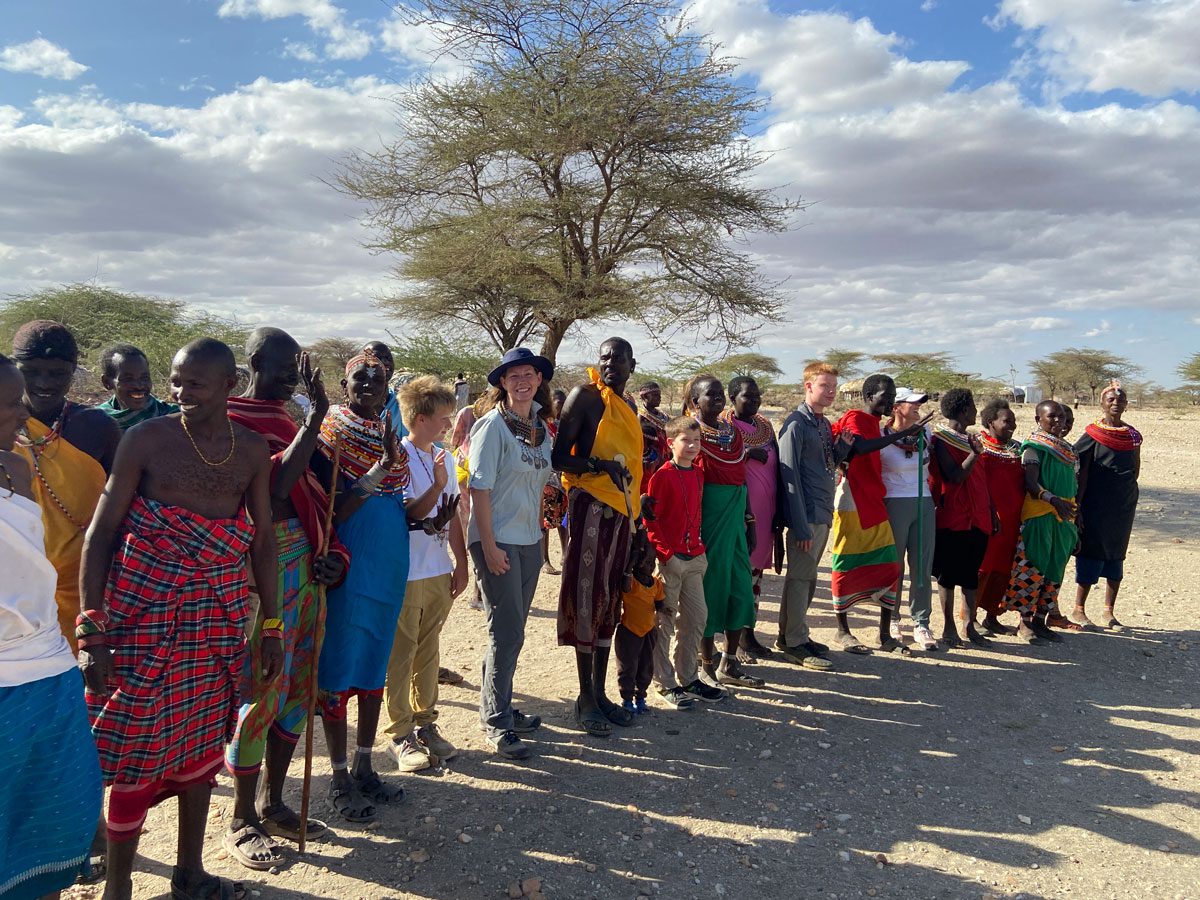
Great Books to Learn More About African Tribal Life:
Have a Great Visit to a Samburu Village with Your Traveling Feet!
If You Found This Helpful, Please Share/ Pin It
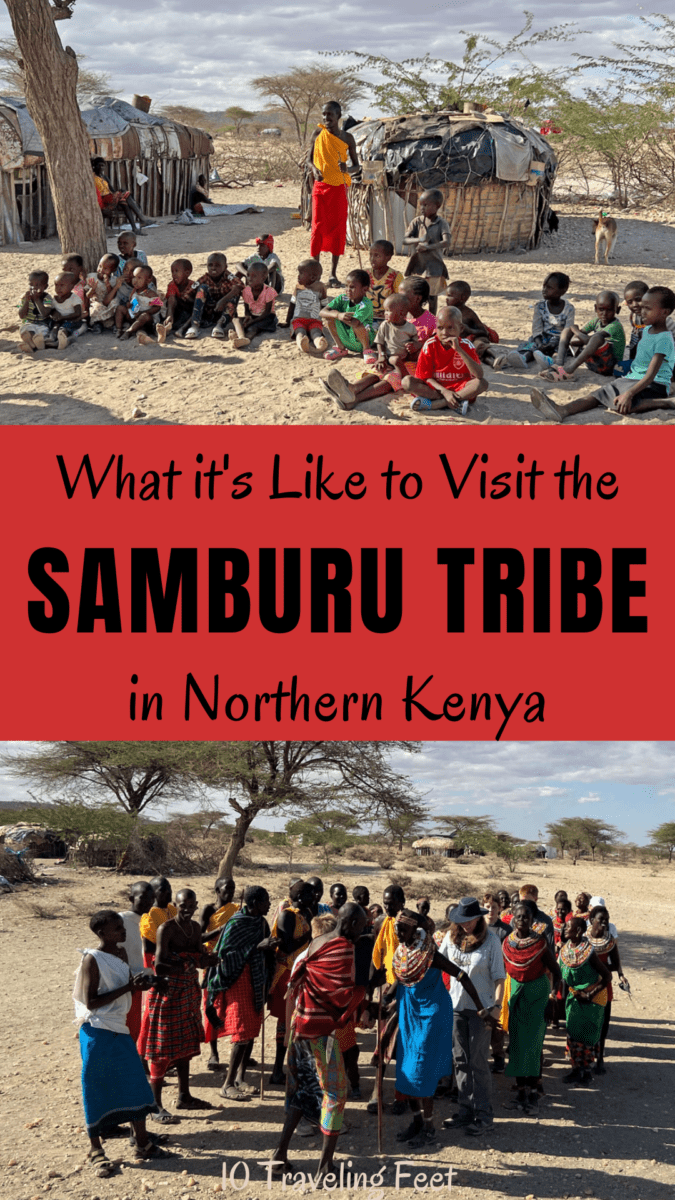
Thank You!
10 Traveling Feet is a participant of Amazon Associates which means means we may receive a small commission, at no cost to you, if you make a purchase through a link. Thank you for supporting 10 Traveling Feet.



